Digital Age Learning Environments
Technology coaches create and support effective digital age learning environments to maximize the learning of all students.
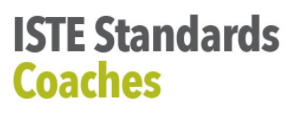 a. Classroom Management & Collaborative Learning: Model effective classroom management and collaborative learning strategies to maximize teacher and student use of digital tools and resources and access to technology-rich learning environments
a. Classroom Management & Collaborative Learning: Model effective classroom management and collaborative learning strategies to maximize teacher and student use of digital tools and resources and access to technology-rich learning environments
b. Managing Digital Tools and Resources: Maintain and manage a variety of digital tools and resources for teacher and student use in technology-rich learning environments
c. Online and Blended Learning: Coach teachers in and model use of online and blended learning, digital content, and collaborative learning networks to support and extend student learning as well as expand opportunities and choices for online professional development for teachers and administrators
d. Adaptive and Assistive Technology: Select, evaluate, and facilitate the use of adaptive and assistive technologies to support student learning
e.Basic Troubleshooting: Troubleshoot basic software, hardware, and connectivity problems common in digital learning environments
f. Selecting & Evaluating Digital Tools & Resources: Collaborate with teachers and administrators to select and evaluate digital tools and resources that enhance teaching and learning and are compatible with the school technology infrastructure
g. Communication and Collaboration: Use digital communication and collaboration tools to communicate locally and globally with s]tudents, parents, peers, and the larger community
Digital Age Learning Environments Summary:
Classroom Management & Collaborative Learning: Building a culture of collaboration is worth the work to empower others. It is a risk, but success comes from essentially believing in others—and the potential they have. The schools who embrace and value collaboration as a way to improve teaching practices and student outcomes find trust to be the key component. Trust among peers is an important piece to successfully have those conversations about professional teacher learning experiences and student growth.
By effectively working with peer coaches, through communication and collaboration teachers improve instructional practices. Peer coaching helps teachers integrate technology and improve instruction through reflection on measured student outcomes. The elements of the servant leader culture are the same communication and collaborative skills successful in coaching and teaching and can support the school community. A school community built on trust, communication, and collaboration has inherent successful classroom management. (See Post: Working Toward a Collaborative Culture)
Managing Digital Tools and Resources & Selecting & Evaluating Digital Tools & Resources: When studying the needs of teacher professional development in a digital age, there are many ways in which to promote digital age best practices in teaching, learning, and assessment. Professional development is important for administrators to increase and promote digital learning in the classroom and school. The school leadership establishes the goals and develops the process that supports and sustains the environment that allows teachers to innovate classrooms with digital learning.
Jean Tower, who is a Director of Media and Digital Learning, writes about planning tools developed by the Consortium for School Networking (CoSN), for districts and schools moving toward a digital learning environment. The systems framework they developed ten implementation categories that help group these best practices and explains how they integrate with the 21st-century skills and academic content. The work is ambitiousness, the amount of effort that results in the professional community shifts must be supported through intentional professional development, and is inspiring. (See Post: Systems Framework for Digital Environments)
Online and Blended Learning: Significant and ongoing changes can happen when a school’s “policies, practices, culture, and funding” are structured to facilitate the integration of educational technology. Instruction is more important than technical mastery of technology, although both elements are essential. Successful PD programs provide ongoing support through coaching; programs that include coaching or mentoring are more likely to implement new instructional methods including online and blended learning.
Future professional development will be based on best practices. Some examples are Gamified PD which is simple, user-friendly, and fun; Apple PD trainer of trainers model and tech trek; Personalized approaches: the differentiated approach to learning technology. Future offerings will be “a wide variety of learning opportunities” in different learning styles. (See Post: Blended Learning: Mixing it all up)
Adaptive and Assistive Technology: Students do not come to us with the same backgrounds, knowledge, and abilities. In reality, we receive students with IEP’s and 504’s, but much more that are undiagnosed. It does not make sense to use a one size fits all curriculum for that imaginary average student that doesn’t exist. Starting every student in the same place will never ensure that they all learn in the same way and at the same time.
The Universal Design for Learning framework provides tools to create and design lessons with variability and tailorable options, allowing all learners to grow from where they are and not where we would have imagined them to be. Inclusive practices that address the needs of diverse learners creates student-centered classrooms which inspire learning. Students become active learners, provided with fair and equal opportunities to learn.
UDL provide best practices including technology integration with clear, meaningful goals within ongoing evaluation and feedback be dynamic enough to provide effective instruction for all learners. (See Post: Universal Design For Learning: Using Digital Tools To Meet All Learner’s Needs)
Basic Troubleshooting: There are several problems that can happen when teaching with technology; the most common are with the hardware or the software. Teachers who use technology on a daily basis have developed strategies to minimize issues and help move the lesson successfully forward. Students are great resources; they can share how they solve technology issues with the classroom and teacher.
Giving students time to experiment with both hardware and software, they can explore the similarities and differences, examine the menus and the tools, learn how to save work and open files, and discover where the help is. Giving them time to become comfortable with the technology to try different options helps them when looking for solutions to problems. Having students who take turns in the role of tech support allows for them to work with each other and instills confidence in their abilities. (See Post: Increasing Use of Technology Creates Need For Troubleshooting Strategies)
Communication and Collaboration: Using technology as the tool that connects the standards to the content is what increases learning. Computer Science is a growing field that encourages discovering meaning through the construction of knowledge and the communication of ideas through our digitally connected world. This approach can thrive when inquiry, exploration, and play, continue to be valued and encouraged as meaningful learning experiences. Educational technology must replace its focus from the technologies and content to connected learning. (See Post: Digital Readiness Project)
Fulfilling Digital Age Learning Environments Standards:
Classroom Management & Collaborative Learning:
As I work to implement Computer Science in K-12 education, for my work to be successful, it must be collaborative. The culture of collaboration, as evident in Servant-Leaders, is where all members take the initiative, commit to the success of other members, to continuous improvement and active learning. As servant-leaders, building a collaborative environment, we need to listen to the needs of others. Part of that success will be through creating fear-free space where innovators can take risks and be heard. We have an obligation to remember to celebrate those taking these risks, highlighting the successes and praising risk taking.
Managing Digital Tools and Resources & Selecting & Evaluating Digital Tools & Resources:
Computer Science curriculum varies and is most often dependent on technology. One of my goals is to supply districts and schools with a way to evaluate and review curriculum based on system requirements. When initiating a technology plan; districts have to decide what resources will be used to define the infrastructure, and Computer Science is usually not part of that decisions. Additionally, connectivity for the schools and the community need to be robust and support the implementation of future technology. The technology choices should be thoroughly investigated and informed by scalability, but more importantly based on sustainability.
An evaluation starts with shared leadership and vision, and goals are established and used to evaluate progress; remembering that outcomes are required to be measurable. Guidelines, procedures, and policies should be addressed, as issues must be addressed as they become known. Inherent in this is student’s security and privacy which should be the priority and educator needs for technology should be addressed.
Online and Blended Learning:
Computer Science will need to be integrated into the next-generation of professional learning, and it should be done now. By developing leadership in our Educational Service Districts, we can work to provide training on how to achieve the computer science standards, establishing a new culture of learning, and individualize or personalizing learning will lead the transition to new dynamic digital learner-centered environments.
We need to find ways to empower the teacher: One-size-fits-all is gone, flexibility, breadth of options, and convenience are the how: collaboration, communication, critical thinking, and creativity are the what. By teaching strategies, not tools: training them to implement technology in their classrooms as a way to meet student outcomes. By understanding appropriate pedagogical practices for using technology, teachers can effectively incorporate and impact the classroom.
Teacher-leaders will be our change agents, Leading by example: asynchronous virtual, live via distance learning, or face to face
Adaptive and Assistive Technology:
Digital equity is a priority for Computer Science and a priority focus for me. As a computer science graduate in the early 90’s, I know first hand the issues that women and minorities face, for me this is personal. Lack of access for underrepresented groups does not only deny them opportunities to begin pathways toward high-paying, high-demand careers. It also limits students from learning the literacy skills of the 21st century. Studying computer science not only enables careers in computing but provides skills such as logic and critical thinking. I lead the Computer Science implementation team and develop strategies through equity as a lens.
Basic Troubleshooting:
In Computer Science, there are several areas where problems commonly happen; hardware, software, but often it is the user. Integrating computer science requires teachers and staff to work with technology issues. Just being able to explain what is wrong the students demonstrate communication skills. By exposing students to problems they have not seen before, requires them to use their knowledge and skills. Having students troubleshoot technology is not a new idea, there is curriculum is available to help. As always, there is a catch-all solution that should be tried if all else fails, reboot. It works and is the first solution your technology support services will ask you to do.
Communication and Collaboration:
Computer Science and Educational Technology standards complement each other. As I work with districts and schools implementing the computer science standards, it is often beneficial to expand the educational technology already part of the curriculum. Both Computer Science and Educational Technology can work together to develop fundamental computational thinking and programming concepts. Concepts enhanced through hands-on unplugged or technology exercises with a variety of interactive digital tools and technology toys. Instruction will focus on developing students that can work independently and collaboratively using age appropriate digital media.
The standards require that teachers model and facilitate lessons that promote safe, healthy, legal and ethical uses of digital information and technologies. I will be working with districts and school on implementing a curriculum that is age appropriate and is more culturally diverse while supporting coding and educational technology.
Posts:
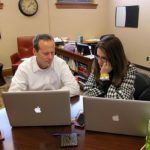
PD for Technology Integration: Best Practices
Significant and long‐lasting changes occur when a school’s “policies, practices, culture, and funding” are structured to facilitate the integration of educational technology. The distributed leadership model is a way to continue supporting teacher leaders and implement shifts in teaching strategies.
read more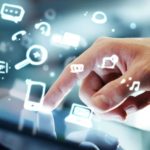
Systems Framework for Digital Environments
While studying the needs of teacher professional development in a digital age, I wondered what is the optimal way in which to promote digital age best practices in teaching, learning, and assessment. One knows the school leadership establishes the goals and develops the process that supports and sustains the environment that allows teachers to innovate classrooms with digital learning. Considering this, how can administrators increase and promote digital learning in the classroom and school.
read more
Working Toward a Collaborative Culture
The schools who embrace peer coaching are those who value collaboration as a way to improve teaching practices and student outcomes. By effectively working together through communication and collaboration they improve instructional practices. Trust among peers is an important piece to successfully have those conversations about professional learning experiences and teacher growth. Peer coaching helps teachers integrate technology and improve instruction through reflection on measured student outcomes. Peer coaching can be a role of the servant-leader who strives to build up and support the school community.
read more
Increasing use of Technology creates need for troubleshooting strategies
There are several problems that can happen when teaching with technology, it can be with either the hardware or the software. Teachers who use technology on a daily basis have developed strategies to successfully minimize issues and help move the lesson forward. Besides errors that can be listed in a common troubleshooting checklist, IT services can provide strategies that soon become classroom routines. Students are great resources, they can share how they solve technology issues with the classroom and teacher.
read moreUniversal Design for Learning: Using digital tools to meet all learner’s needs
Digital tools, beyond personal assistive technologies, can be used for all students to become learners through strategies that remove barriers. To help teachers and administrators understand how strategies or tools could be implemented is Universal Design for Learning (UDL). These principles come from the work of Vygotsky, Bloom, and cognitive neuroscience where by understanding the needs of students, teachers can modify the curriculum to meet the needs of all students.
read more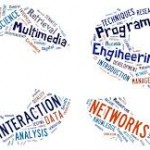
Blended Learning: Mixing it all up
Throughout this class, I have researched ways to increase my students' understanding of Computer Programming Concepts. By incorporating the ISTE Standards, I have been able to create innovative opportunities through a diverse set of technology. Working through the strategies of CodeHS, pair programming and the idea of student-run programming forums which are in addition to my instruction I realize that I’m implementing a Blended Learning Environment.
read more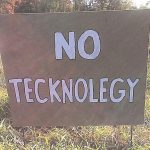
Digital Readiness Project
During this, the first class of my Digital Education Leadership program, we looked at the idea of "Digital Readiness" as it pertains to our districts. The basis for our assignment resides in the ISTE Coaching Standard 5 - Digital Citizenship.
read more